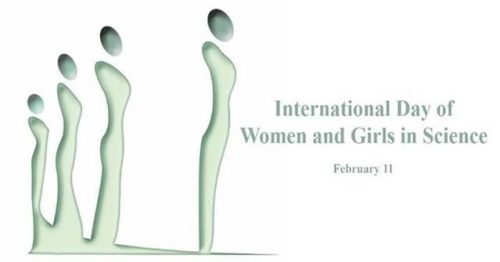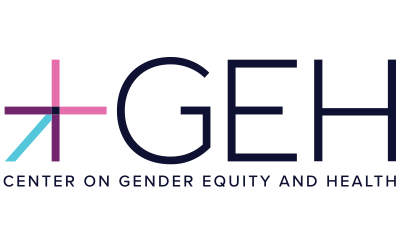Improvements for Whom? The importance of gender equity in monitoring progress in global health and development
Leave no one behind. This is one of the rallying cries of the Sustainable Development Goals (SDGs), the global goals for health and development that severe as successors to the Millennium and Development Goals (MDGs). The SDGs have expanded the work begun by the MDGs by recognizing a greater breadth of social inequities that influence health and development outcomes, and by asking for progress to be measured not only overall, but also stratified by “income, gender, age, race, ethnicity, migratory status, disability, geographic location and other characteristics relevant in national contexts” (SDG 17.18). Discussions of equity are integral to this work, to ensure that key interventions are reaching all groups in need.
To this end, the UCSD Center on Gender Equity and Health is delighted to have been invited to participate in the inaugural meeting of the Countdown to 2030 Equity Technical Working Group, in Pelotas, Brazil. The meeting was hosted by the International Center for Equity in Health, a research center housed at the Federal University of Pelotas that has pioneered advances in the science of applied equity analyses around the world. Countdown to 2030 builds on the achievements of Countdown to 2015, and is a global coalition of diverse multi-disciplinary organizations working together to improve the understanding of existing coverage and inequalities in key reproductive, maternal, newborn and child health interventions and health outcomes. The 81 countries with the greatest need from improvement in these areas will be monitored for the next 15 years by the Countdown to 2030 initiative, calling for action and holding the governments accountable or their commitment with the SDGs.
At this meeting, graduate students and faculty from the International Center for Equity in Health (ICEH) showcased diverse research on issues of equity in health, including summary indices for the coverage of key health interventions, ethnic disparities in Latin America, sex inequalities in health care-seeking and child mortality in low-and-middle-income countries, and an index of women’s empowerment based on Demographic and Health Survey information. Gender inequalities and the empowerment of women and girls are being put high in the ICEH agenda. The recognition of women as an integral part of society is a goal in itself, but it is also evident that no country can reach optimum development with the marginalization of half of its population.
The SDGs highlight the importance of gender equity, with Goal 5 calling for gender equality and empowerment for all women and girls. While the “leave no one behind” mandate includes measurement of gender equality (male/female breakdowns of key measures), indicators of gender equity and empowerment, such as age at marriage and decision-making autonomy, are notably missing from this list. It is critical to recognize that gender inequities impact a great range of outcomes, and should be considered as a potential health factor in monitoring progress across all SDGs. The inclusion of the Center on Gender Equity and Health in the Countdown to 2030 Equity Technical Working Group is an important step in this direction, and highlights Countdown’s recognition of the importance of gender equity across reproductive, maternal, newborn, and child health.
The focus on intersectionality in the new SDG era speaks strongly to gender equity, as a social and gender inequities often compound each other, with poor, rural-residing and less educated women being more likely to also have experienced intimate partner violence or child marriage, for example. These inequities cause substantial morbidity and mortality, and their health burdens cross generational boundaries. Quantifying and tracking such concerns thus includes the creation of basic gender stratifications, but also moves beyond into measures of empowerment such as women’s autonomy. The burgeoning presence of gender equity in public health training programs and in global health monitoring represents increasing recognition that gender inequities compromise achievements for women and girls’ health and well-being.
Today, on the International Day of women and Girls in Science, we write as two women scientists trained in the measurement and analysis of gender inequities. We are encouraged by the growing attention that gender inequities are receiving, and hope that the recognition that many of the women and girls whose health and development are adversely affected by social inequities are also impacted by gender inequities continues to grow. We strive to further this work from an academic and scientific perspective, in the belief that this will not only help to ensure that no one is the left behind, but that some – or many – of those girls who are not left behind may grow up to make important contributions to science themselves.
Authored by: Lotus McDougal, PhD, MPH & Fernanda Ewerling
References:
- United Nations Economic and Social Council. Report of the Inter-Agency and Expert Group on Sustainable Development Goal Indicators. United Nations; 2016.
- Victora C, Requejo J, Boerma T, et al. Countdown to 2030 for reproductive, maternal, newborn, child, and adolescent health and nutrition. The Lancet Global health. 2016;4(11):e775-e776.
- Raj A. When the mother is a child: the impact of child marriage on the health and human rights of girls. Arch Dis Child. 2010;95(11):931-935.
- Silverman JG, Decker MR, Cheng DM, et al. Gender-based disparities in infant and child mortality based on maternal exposure to spousal violence: the heavy burden borne by Indian girls. Arch Pediatr Adolesc Med. 2011;165(1):22-27.
- Raj A, Boehmer U. Girl child marriage and its association that with national rates of HIV, maternal health, and infant mortality across 97 countries. Violence Against Women. 2013;19(4):536-551.
- Singh K, Bloom S, Brodish P. Gender equality as a means to improve maternal and child health in Africa. Health Care Women Int. 2015;36(1):57-69.




